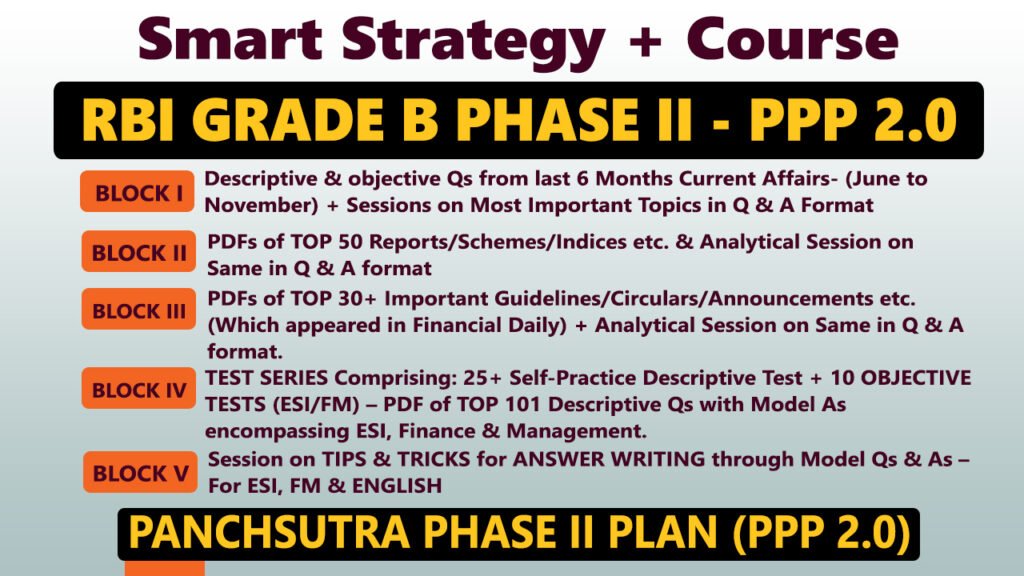Daily Current Affairs Quiz
2 September, 2025
National Affairs
1. Unified District Information System for Education Plus (UDISE+) Report 2024-25
Source: PIB
Context:
The Ministry of Education has released the Unified District Information System for Education Plus (UDISE+) 2024-25 report, presenting the latest status of school education in India. While basic infrastructure like toilets and drinking water has achieved near-universal coverage, serious concerns remain around digital access, teacher shortages, and uneven enrolment trends.
What is UDISE+?
- Annual school data system (Grades I–XII) launched in 2018 to replace UDISE.
- Collects data from all government, aided, and private schools.
- Tracks infrastructure, enrolment, pupil-teacher ratio (PTR), training, digital readiness, health facilities, and the overall learning environment.
Key Findings of UDISE+ 2024-25
Digital Divide
- Computers available: 65% of schools, but only 58% functional.
- Internet access: 63% schools overall.
- Govt. schools: 58.6%
- Private schools: 77.1%
- Digital inequality persists, especially in rural and government schools.
Infrastructure
- Toilets: 98.6% schools
- Hand-wash facilities: 95.9%
- Drinking water: 99%
- However, 25,000+ schools still lack electricity, limiting digital learning.
2. DBT–BIRAC Launch High-Performance Biomanufacturing Platforms
Source: ET
Context:
The Department of Biotechnology (DBT) and Biotechnology Industry Research Assistance Council (BIRAC) launched High-Performance Biomanufacturing Platforms in New Delhi, under the BioE3 Policy. The initiative was inaugurated by Union Minister of State for Science & Technology, Jitendra Singh.
About High-Performance Biomanufacturing Platforms
- Nature: National network of advanced bio-foundries and biomanufacturing hubs.
- Purpose: Provides world-class tools, technologies, and infrastructure to scale bio-based innovations from lab to production.
- Policy Base: Part of the BioE3 (Bio-manufacturing to Bio-Economy by 2047) Policy.
Aims & Objectives
- Accelerate biomanufacturing and commercialization of innovations.
- Reduce import dependence in critical bio-based products.
- Foster green growth and contribute to a multi-trillion-dollar bioeconomy by 2047.
- Empower startups, SMEs, academia, and industry in biotechnology R&D.
Key Features
- 21 bio-enablers supported under BioE3 Policy.
- Priority Areas:
- Microbial strains & smart proteins.
- Probiotics & bio-based chemicals.
- Cell therapies & mRNA-based medicines.
- Marine bio-innovations & sustainable biofuels.
- Focus on climate alignment, Atmanirbhar Bharat, and Viksit Bharat 2047.
- Capacity building and employment generation across biotech value chains.
3. SEMICON India 2025
Source: TOI
Context:
At SEMICON India 2025, Prime Minister Narendra Modi unveiled India’s first homegrown semiconductor chip, named ‘Vikram’, marking a landmark step in India’s semiconductor ecosystem.
India Semiconductor Mission (ISM)
- Launched in December 2021 with an outlay of ₹76,000 crore, now nearly fully committed.
- Approvals granted for:
- 1 chip fabrication unit
- 1 compound semiconductor fabrication unit
- 8 OSAT/ATMP units (Outsourced Semiconductor Assembly and Testing / Assembly, Testing, Marking, and Packaging).
- Participation in SEMICON India 2025 expected to double compared to the previous edition.
About Vikram Chip
The Vikram Chip is India’s first indigenously manufactured semiconductor chip, developed under the government’s Semicon India initiative to strengthen the domestic electronics manufacturing ecosystem. It was unveiled in 2025, marking a historic milestone for India’s entry into the global semiconductor value chain.
Key Features of Vikram Chip
- Developed at Micron’s Sanand facility in Gujarat, India’s first commercial semiconductor fabrication unit.
- Named after Dr. Vikram Sarabhai, the father of India’s space program.
- Built using 28nm technology node in the initial phase, with a roadmap toward advanced nodes.
- Designed for use in consumer electronics, telecom, automotive, and defense applications.
- Aligns with India’s vision of becoming a global semiconductor hub by 2030.
4. India–US Yudh Abhyas Army Exercise 2025
Source: PIB
Context:
India and the United States have begun their largest-ever edition of the Yudh Abhyas Army exercise at Fort Wainwright, Alaska, despite recent tariff-related trade tensions between the two nations.
About Yudh Abhyas:
- Type: Annual bilateral military exercise between the Indian Army and US Army.
- Focus Areas: Joint training in counter-terrorism, peacekeeping, high-altitude, and extreme cold climate warfare.
- Host (2025): United States, conducted in Alaska’s subarctic conditions.
Participants (2025):
- India: Soldiers from the Madras Regiment.
- United States: 5th Infantry Regiment “Bobcats” of the Arctic Wolves Brigade Combat Team, 11th Airborne Division.
Banking/Finance
1. Deutsche Bank Plans to Exit Indian Retail Banking
Source: Mint
Context:
Deutsche Bank is reportedly exploring the sale of its Indian retail banking assets, inviting bids from domestic and foreign lenders. This comes as part of its global strategy to make retail operations more profitable and streamline branch presence.
Retail Banking Assets
Retail banking assets are the loans, deposits, and services that a bank provides directly to individual customers (not businesses or corporates). Think of it as the part of a bank’s business that deals with “common people”—your savings account, home loan, credit card, etc.
Examples: Deposits + Loans + Cards + Services = Retail Banking Assets
Difference from Corporate Banking
| Retail Banking | Corporate Banking |
|---|---|
| Serves individuals and households | Serves companies, firms, large institutions |
| Products: savings accounts, home loans, credit cards | Products: business loans, working capital, trade finance, treasury services |
| Many small customers | Few large customers |
RBI Guidelines and Legal Provisions
When a bank (foreign or Indian) wants to sell its retail assets in India, RBI’s approval is mandatory. Key laws and rules:
- Banking Regulation Act, 1949
- Section 44A → Deals with voluntary amalgamation/transfer of banking business.
- Section 35B → Requires RBI’s prior approval for certain management decisions (including transfers).
- Section 12B → RBI approval needed for acquisition of more than 5% stake in a bank.
- Foreign Exchange Management Act (FEMA), 1999
- Foreign banks must comply with FEMA norms while selling/disposing assets in India.
- RBI Guidelines on Amalgamation of Private Sector Banks (2016)
- Even if only a portfolio or branch is transferred, the acquiring bank must satisfy RBI’s “fit and proper” criteria.
- Customer Protection Rules
- RBI ensures no disruption to depositors/loan customers.
- Buyer bank must guarantee seamless transfer of accounts, cards, and services.
About Deutsche Bank in India
- Presence: Since 1980s.
- Employees: 22,000+ in India (largest base outside Germany, mostly back-office/tech).
- Operations: Retail, corporate banking, investment banking, treasury, derivatives, wealth management.
2. RBI Update on Withdrawal of ₹2000 Banknotes
Source: RBI
Context:
The Reserve Bank of India (RBI) announced the withdrawal of ₹2000 denomination banknotes on May 19, 2023. RBI periodically updates the status of returned notes. As of August 31, 2025, almost all ₹2000 notes have been returned.
Background
₹2000 note was introduced in November 2016 (post-demonetisation) to quickly meet currency needs.
RBI’s Clean Note Policy
RBI Act, 1934
- Section 24: RBI’s power to determine denominations.
- Section 26(2): Central Government, on RBI’s recommendation, can declare any banknote to cease as legal tender.
Impact
- On Public: Minimal impact since deposits/exchanges were allowed widely.
- On Economy: Improved currency management, reduced hoarding of high-value notes.
- On Banks: Temporary workload during deposit/exchange phase, now shifted to RBI Issue Offices.
Sources of Income of RBI
| Source of Income | Explanation | Example |
|---|---|---|
| Seigniorage (Currency Issuance) | Profit earned from issuing currency at face value higher than printing cost | Printing a ₹500 note costs ~₹5, but RBI issues at ₹500 → profit = ₹495 |
| Investment in Foreign Assets | Earnings from interest on foreign exchange reserves invested in safe securities | US Treasury bonds, Euro Govt bonds |
| Government Securities (Domestic) | Interest income from GoI bonds & Treasury bills held by RBI | Holding G-Secs bought during OMO operations |
| Lending to Banks (Repo/MSF) | Interest earned from short-term lending to commercial banks | Repo rate lending to SBI, HDFC Bank |
| Government Debt Management Fees | Commission for managing central & state govt borrowings | Issuing and servicing G-Secs on behalf of Govt |
| Banking Services Fees | Charges for providing settlement and payment systems | RTGS/NEFT transactions, cheque clearing |
| Other Investments (Gold, Bonds) | Returns from gold reserves & other financial instruments | Income from RBI’s gold holdings |
3. India’s Current Account Deficit
Source: ET
Context:
The Reserve Bank of India (RBI) reported that India’s current account deficit (CAD) fell sharply to $2.4 billion (0.2% of GDP) in Q1FY26 (April–June 2025), compared to $8.6 billion (0.9% of GDP) in Q1FY25. This came after a current account surplus of $13.5 billion (1.3% of GDP) in Q4FY25.
What is Current Account Deficit?
- The Current Account records a country’s trade in goods & services, net income from abroad, and net transfers (remittances).
- Current Account Deficit (CAD) means India’s import of goods, services, and transfers > export earnings + remittances.
- Formula:
CAD = (Imports + Net Income Payments + Net Transfers) – (Exports + Remittances)
Key Components of Current Account
- Merchandise Trade Balance → Exports vs Imports of goods (e.g., oil, gold, machinery).
- Services Balance → IT, BPO, tourism, shipping.
- Primary Income → Interest, dividends, profits paid to foreign investors.
- Secondary Income (Transfers) → Remittances by Indians abroad.
Causes of CAD in India
- High Import Bill: Crude oil, gold, electronics.
- Weak Export Growth: Low competitiveness in manufacturing.
- Global Slowdown: Weak demand for IT/services exports.
- Rupee Depreciation: Raises cost of imports.
- High Outward Investment Returns: Profits repatriated by foreign companies.
Impact of CAD on India
| Positive (Short-term) | Negative (Long-term) |
|---|---|
| Can support domestic consumption & growth via imports (oil, machinery) | Weakens rupee (depreciation pressure) |
| Indicates demand for capital goods (industrial growth) | Higher external debt as CAD financed by borrowing |
| May attract FDI/FPI to finance gap | Rising inflation (imported oil & goods) |
| Shows integration with global economy | Reduces forex reserves if persistent |
RBI and Government Role
- RBI Tools:
- Use of forex reserves to stabilize rupee.
- Monetary policy (repo rate changes).
- Managing external debt flows.
- Government Measures:
- Boost exports via Foreign Trade Policy.
- Reduce gold imports (higher duties, gold bonds).
- Incentives for manufacturing (PLI scheme).
- Atmanirbhar Bharat push for domestic production.
Acts & Provisions
- FEMA, 1999 (Foreign Exchange Management Act) → Governs foreign exchange and external payments.
- RBI Act, 1934 → RBI manages forex reserves & balance of payments.
- Customs Act, 1962 → Governs import duties affecting trade balance.
4. India’s Path to Universal Health Care (UHC)
Source: TH
Context:
The debate on India’s Universal Health Care (UHC) has intensified with rising budgets for Ayushman Bharat–PMJAY and State Health Insurance Programmes (SHIPs). The Bhore Committee Report (1946) laid the foundation for Universal Health Care (UHC) in India, advocating a publicly funded, comprehensive health system.
Growth of Health Insurance in India:
- PMJAY (2018): Provides ₹5 lakh cover per household annually, covering 58.8 crore individuals (2023–24).
- State Health Insurance Programmes (SHIPs): Parallel state schemes cover a similar population with ~₹16,000 crore budget.
- Combined Annual Expenditure: ~₹28,000 crore, rising 8–25% (2018–2024).
- Utilisation Gap: Despite wide coverage, only 35% of insured hospital patients could use schemes (HCES 2022–23).
Fault Lines in Insurance Expansion:
- For-Profit Bias: Nearly two-thirds of PMJAY funds flow to private hospitals, leading to overcharging and unnecessary procedures.
- Neglect of Primary Care: Focus on hospitalisation diverts funds from PHCs, diagnostics, and preventive care.
- Utilisation Barriers: Awareness gaps, low reimbursement rates, and hospital reluctance restrict access.
- Discrimination: Public hospitals prefer insured patients; private hospitals prefer uninsured ones for higher billing.
- Financial Strain: Pending dues under PMJAY (₹12,161 crore) exceed budget; over 600 hospitals exited due to delayed reimbursements.
- Fraud Risks: NHA flagged 3,200 hospitals for fraudulent claims, ghost patients, and inflated bills.
Structural Risks for UHC:
- Public health expenditure remains 1.3% of GDP (vs global average 6.1%).
- Insurance reinforces private dominance without solving systemic quality gaps.
- Out-of-pocket (OOP) spending in India remains among the highest globally.
International Comparisons:
- Thailand, Canada: Successful UHC relies on non-profit providers, universal funding, and strong regulation.
- India’s Model: Targeted, profit-oriented, with weak regulatory oversight.
Way Forward:
- Strengthen public health infrastructure (PHCs, diagnostics, rural workforce).
- Prioritise preventive and primary care over hospitalisation-focused funding.
- Regulate private sector with price caps, standard treatment protocols, and strict audits.
- Improve beneficiary awareness, digital literacy, and grievance redressal.
- Ensure timely reimbursements and explore direct budgetary allocations.
- Raise public health spending to 2.5% of GDP as per National Health Policy 2017 target.
5. External Commercial Borrowings (ECBs) in India
Source: BS
Context:
The net inflows of foreign resources via External Commercial Borrowings (ECBs) rose to $4.6 billion in April-June period of the financial year 2025-26 (Q1FY26) from $ 2.8 billion in the same period previous year, the Reserve Bank of India data showed.
What are ECBs?
- Loans raised by Indian corporates from foreign lenders in foreign currency, regulated under FEMA, 1999.
- Sources include international banks, multilateral institutions, export credit agencies, and global bond markets.
RBI’s Role in Managing ECBs
The Reserve Bank of India (RBI) is the main regulator of ECBs. Its role includes:
- Policy Framework under FEMA, 1999
- Issues ECB Master Directions.
- Decides which sectors, borrowers, and lenders are eligible.
- Approval Mechanism
- Automatic Route: Within prescribed limits, no prior RBI approval needed.
- Approval Route: Sensitive sectors/large amounts require RBI clearance.
- Monitoring End-Use
- Restricts ECBs for speculative activities like real estate, land purchase, or stock market investment.
- Allows ECBs for infrastructure, manufacturing, innovation, and green projects.
- Hedging & Risk Management
- Mandates hedging for certain categories of borrowers to reduce currency risk.
- Cost & Tenor Regulations
- Prescribes all-in-cost ceilings (interest + fees) linked to international benchmarks (SOFR, etc.).
- Sets minimum maturity periods for short-term vs. long-term borrowings.
- Reporting & Transparency
- Borrowers must file ECB returns (Form ECB-2) to RBI for monitoring.
- RBI tracks inflows, repayments, and outstanding foreign debt.
- Macro-Prudential Regulation
- RBI uses ECB caps and conditions as tools to manage external sector stability, capital flows, and rupee volatility.
Impact of ECB Inflows
- Net inflows rose to $4.6 billion in Apr–Jun 2025 vs $2.8 billion in Q1FY25.
- Shows strong corporate demand for global capital.
Implications
- Boosts investment and industrial growth.
- Strengthens forex reserves temporarily.
- Raises India’s exposure to global interest rate cycles and currency risks.
- Heavy reliance may worsen external debt sustainability if rupee depreciates.
Acts & Provisions (Important for RBI Exam)
- Foreign Exchange Management Act (FEMA), 1999 – Legal basis for ECB regulation.
- RBI Act, 1934 – Empowers RBI to regulate external borrowings and foreign exchange.
- Companies Act, 2013 – Governs corporate borrowing and disclosure norms.
Facts To Remember
1. Earthquake Strikes Afghanistan
A strong earthquake and multiple aftershocks collapsed homes onto sleeping families in a remote, mountainous region in Afghanistan, killing more than 800 people and injuring at least 2,800.
2. Ajay Seth takes charge as Irdai chief
Ajay Seth, former secretary of the Department of Economic Affairs (DEA), assumed charge as the chairman of the Insurance Regulatory and Development Authority of India (Irdai) Ajay Seth has assumed charge as Chairman, Insurance Regulatory and Development Authority of India on 1st September, 2025.
3. Govt appoints Kalyani as new Controller General of Accounts
The government has appointed T.C.A. Kalyani, a 1991-batch officer of the Indian Civil Accounts Service, as the country’s new Controller General of Accounts, the finance ministry said in a statement.
4. ISRO’s Announcement of Opportunity (AO) for Chandrayaan-3 Data Utilisation
Chandrayaan-3 successfully achieved a soft landing on the Moon’s southern high latitudes on August 23, 2023, making India the first country to land near the lunar south pole. ISRO has invited proposals from the Indian scientific community for the scientific analysis and utilisation of Chandrayaan-3 lander and rover data.
5. India MedTech Expo 2025
The second edition of the India MedTech Expo 2025 will be held in New Delhi from Thursday to showcase the country’s MedTech strength and innovation.
6. 12-Day All India Thal Sainik Camp Inaugurated in New Delhi
A twelve-day All India Thal Sainik Camp was inaugurated today in New Delhi. Ministry of Defence said that about 15 hundred cadets, from 17 National Cadet Corps (NCC) Directorates representing all states and union territories, will participate in the camp.



















